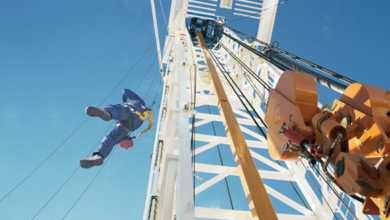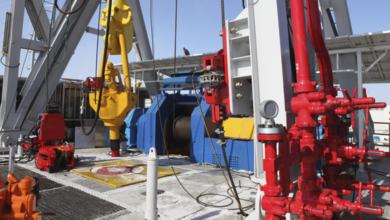Drilling & Completion Tech Digest
High-pressure riser project extends jackup application in deeper waters
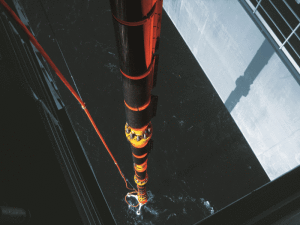
Claxton provided a high-pressure drilling riser for two wells in 132 meters of water on a Gullfaks satellite field in Norway. Statoil used Seadrill’s West Elara jackup to install the riser, which posed water depth challenges. “For jackup operations, deepwater is over 80 meters. Leg length determines the depth that jackup rigs can operate in, but average jackup rigs like the West Elara are for 80 to 100 meters of water, so 132 meters was challenging,” Darren Bowyer, Claxton project manager, said.
Further, the riser had to be ready for installation in eight months. This project was the first use of Claxton’s NT-2 tool for deploying a riser and enabled it to be pressure-tested before makeup to the BOP. Alterations to the drilling riser design included adding a vortex-induced vibration suppression system, using forged rather than welded joints in high-stress and fatigue-prone areas, and upgrading the tensioning system to 500 tons.
A riser monitoring system was developed to gather field data, enable integrity management and verify the predicted models. The system included topside and subsea sensors for recording movement, load and dynamic bending parameters. Rig design changes included increased load capacity for the Texas deck.
“By drawing on successful projects like this, it should be possible to extend jackup drilling deeper,” Mr Bowyer said.
GOM field trial planned for emergency severance tool
Aberdeen-based SPEX Group is developing a subsea tool for Shell that will form a integral part of the riser. In the case of an uncontrolled event, the Emergency Severance Tool (EST) will sever the non-shearable item that is obstructing the BOP, allowing the drill string to fall into the well and enabling the BOP to close.
The EST is due to undergo final field tests in the Gulf of Mexico later this year become commercially available in 2014.The EST can operates at waterdepths up to 10,000 ft and will be positioned just above the BOP.
Halliburton assembles fiber optic capability to provide greater reservoir visibility
Halliburton has acquired a range of interferometric fiber-optic sensing solutions, including distributed acoustic sensing (DAS) interrogation systems. DAS technology turns fiber-optic cable into a fully distributed noise logging system. When applied to a well, operators can tune in to any section of the fiber and listen to what is happening in the well. DAS can be used for stimulation and production monitoring, verification of downhole equipment operation and collection of seismic imaging data.
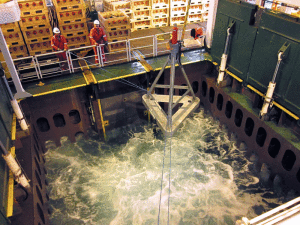
Wireless sensor network logs 90 million sensor readings for field monitoring project
Over the past three years, a wireless sensor network designed and manufactured by Sonardyne International has continuously logged almost 90 million sensor readings as part of a major life-of-field system. In water depths of up to 1,200 meters (approximately 3,900 ft), the company’s Autonomous Monitoring Transponders (AMTs) logged nine measurements every three hours from a range of sensors built into each unit, including pressure, temperature, roll and pitch.
The monitoring system is halfway through its planned six-year operation to meet an oil major’s research and production monitoring requirements. It has been continuously deployed since 2010 following an initial three-year prototype trial. Over the course of 24 hours, approximately 400 data records are collected resulting in 4KB of accumulated binary data from each transponder on the sea floor. This adds up to a total of 29 million measurements per year producing 2GB of data for analysis.
60 stages placed in single well completion in Canada
NCS Oilfield Services has placed 60 stages in a single well completion using its Multistage Unlimited technology. The project in July marked a record for the company by completing its largest number of stages for a single wellbore in Canada.
The multistage completion was accomplished on a 4.5-in. cemented lateral targeting the Torquay formation. Using the NCS Half-Straddle option that pumps frac volumes down the coiled tubing, the job placed 639.5 tons of proppant in 120 hours. The completion operation reached a total measured depth of 5,725 meters (18,782 ft) and a true vertical depth of 2401 meters (7,877 ft).
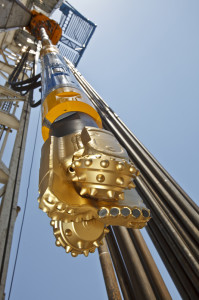
First GOM use of large-diameter Kymera bit improves ROP
A Baker Hughes subsidiary, Baker Hughes Oilfield Operations, has deployed the Hughes Christensen Kymera hybrid drill bit for Statoil to improve rate of penetration (ROP) and drilling performance in an appraisal well in the deepwater Logan field. This was the first time a large-diameter Kymera bit was run in the Gulf of Mexico.
A 26-in. Kymera hybrid bit with 19-mm cutters and premium metal face seals was used to drill the 26-in. vertical section through sediments and salt to section TD, enabling 22-in. casing to be set 450 ft (137 meters) deeper than the well’s original objective.
By using Kymera technology, Statoil was able to achieve an ROP of 57 ft/hr (17 meters/hr) through 1,995 ft (608 meters) of salt, as well as 123 ft/hr (37 meters/hr) through 1,131 ft (345 meters) of sediments. Overall, the ROP was improved by 26% compared with the nearest offset.
Water recycling system reduces total dissolved solids
ThermoEnergy Corp and STW Resources Holding Corp have completed a pilot test of ThermoEnergy’s TurboFrac produced water recycling system at a major oil producer’s site near Midland, Texas. STW provided access and operated the site in conjunction with ThermoEnergy.
The TurboFrac system processed produced water with a 72% freshwater recovery rate while reducing total dissolved solids from 102,000 Mg/L to 40 Mg/L and reduced chlorides from approximately 84,000 Mg/L to 16.5 Mg/L. A concentrated 10-lb brine of over 400,000 Mg/L was also produced.
The system is based on ThermoEnergy’s CAST (Controlled Atmosphere Separation Technology), a proprietary flash vacuum-assisted distillation system that the company has deployed at more than 80 industrial sites in the US, as well as in Europe, Asia and Africa.
Transocean sets water depth record offshore India
Transocean’s ultra-deepwater drillship Dhirubhai Deepwater KG1 has set a world record for the deepest water depth by an offshore drilling rig. The rig spudded a well in 10,411 ft (3,174 meters) of water while working for ONGC off the east coast of India.
This record surpasses Transocean’s prior world record of 10,385 ft of water (3,165 meters), also set by the KG1 while working for ONGC in India in February.
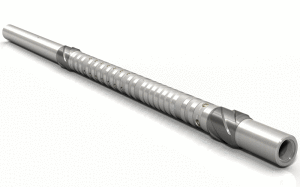
Sonic LWD service delivers real-time data in deepwater, unconventional formations
A new azimuthal and ultrasonic service from Halliburton’s Sperry Drilling Services measures sonic properties, such as rock mechanics and porosity, in formations ranging from deepwater to unconventionals. The XBAT Azimuthal Sonic and Ultrasonic LWD service uses sensors and electronics that are less sensitive to drilling noise and have a wider frequency response, making it suitable for noisy drilling environments and poor hole conditions, according to the company.
The service also uses compressional and shear velocity measurements to deliver real-time pore pressure prediction, seismic correlation, gas detection, sourceless porosity, rock mechanics and wellbore stability, shale logging and cased-hole and cement bond logging.
“The XBAT tool delivers an enhanced signal-to-noise ratio, as well as increased firing flexibility so we can get optimum measurements in a wide range of formations,” said Dr Paul Cooper, LWD sonic product manager for Halliburton. “The service is particularly advantageous in exploration wells where we often don’t know the properties of the formation, and in long runs, where rock properties may change significantly over the course of the run.” The tool is also appropriate for unconventional plays where the azimuthal feature provides measurements of anisotropy in the shear velocity.
The XBAT LWD service uses four discrete transmitters and four azimuthally spaced receiver arrays, each of which is sensitive across a broad range of frequencies and is isolated from the collar to eliminate bit and mud circulation noise.
It also has the capability of firing in five modes downhole, compared with previous tools that had two firing modes. “This gives us greater flexibility to choose different frequencies in exploration wells, which can have a wide range of formation slowness,” Dr Cooper said.
For more about the XBAT Azimuthal Sonic and Ultrasonic LWD service, click here.


